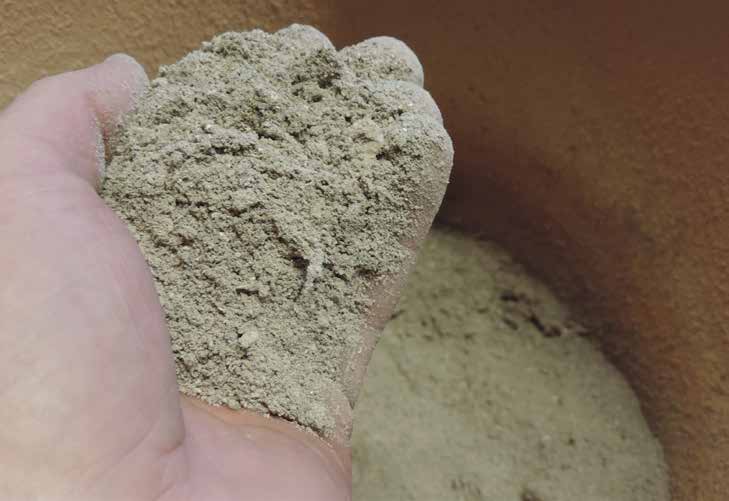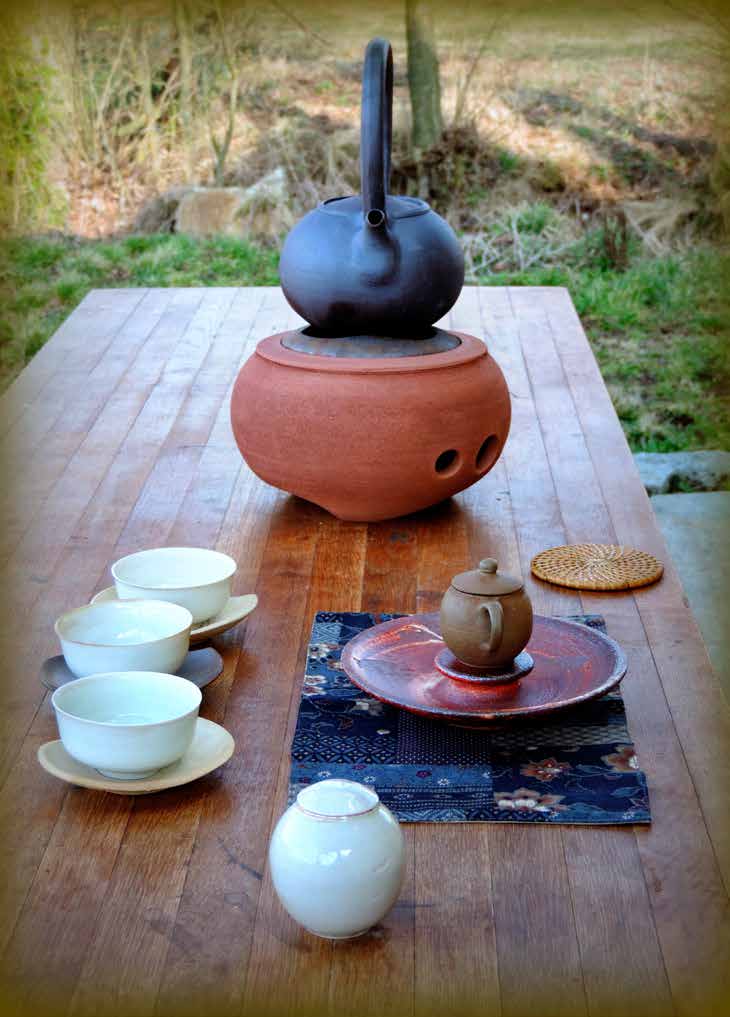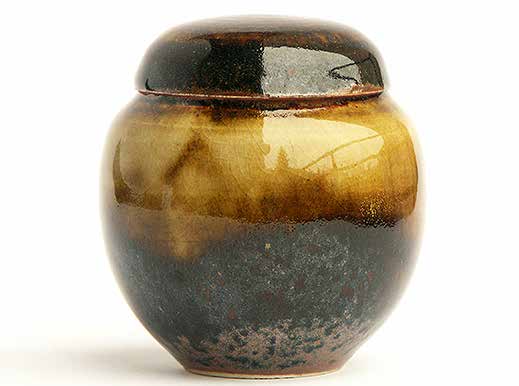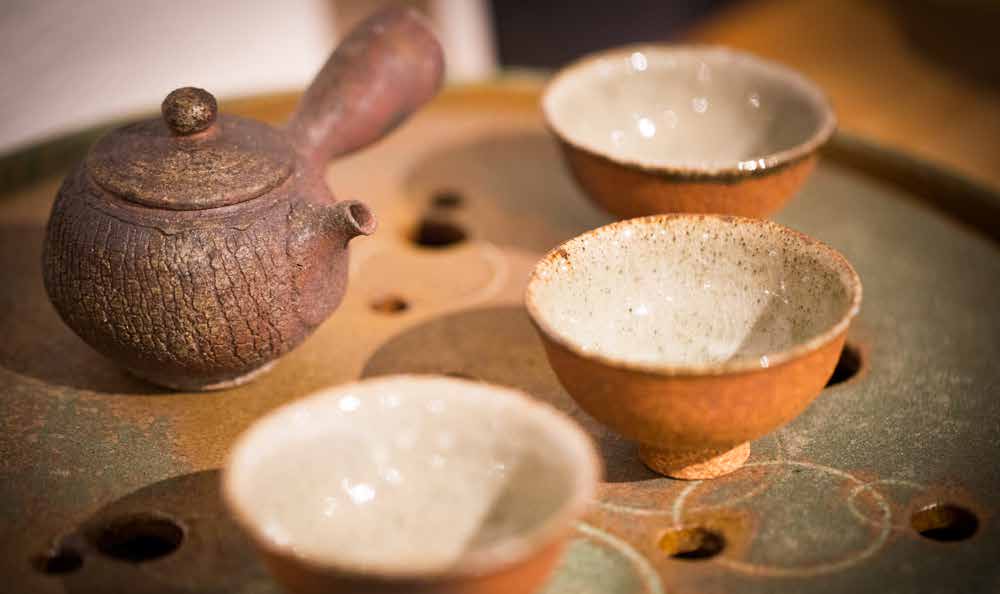
 |
|

Here at Tea Sage Hut, we host hundreds of visitors a year. We connect with people who are completely new to tea, and welcome back those who have been in this tradition for years. Recently, we hosted famed Czech ceramicist Petr Novak here at the Hut.
After fifteen years of commercially producing ceramics, Petr now regularly sells his wares to tearooms, tea shops and groups of tea lovers in Spain, Germany, the US, Estonia, Russia, Slovakia, Poland and the Czech Republic, as well as to collectors in Singapore and Malaysia. And although some of his works have been in the Hut for some time now, it was the first time he has visited personally. After a few tea sessions with some gorgeous bowls and a charcoal brazier he made for the center, Petr and I had the chance to sit down for an interview about his work.
Like Peter Qian, who we featured in the April issue, Petr is continually experimenting with his medium. He stated simply, "Ceramics is fascinating. It makes me happy." And that fascination and joy is clearly reflected in his work. But so is another sentiment he shared about his craft: "It's not perfect. It's never perfect. In another thirty years, maybe, but it's never ending. It's always growing. You don't have time to feel, 'Now I'm good' or 'Now I've achieved something.'"
Petr's love of ceramics and his continual growth in the medium have resulted in a multitude of experiments with different materials and techniques. In each monthly firing, Petr includes a mix of orders he's filling and pieces or test samples he felt inspired to create. He said his creative process for the second category of work "builds out from the last kiln" and that each batch gives him ideas for what to try next time. He added, "I'm not the kind of designer who works on sketches for hours. Instead, I usually sit behind the wheel and start working."
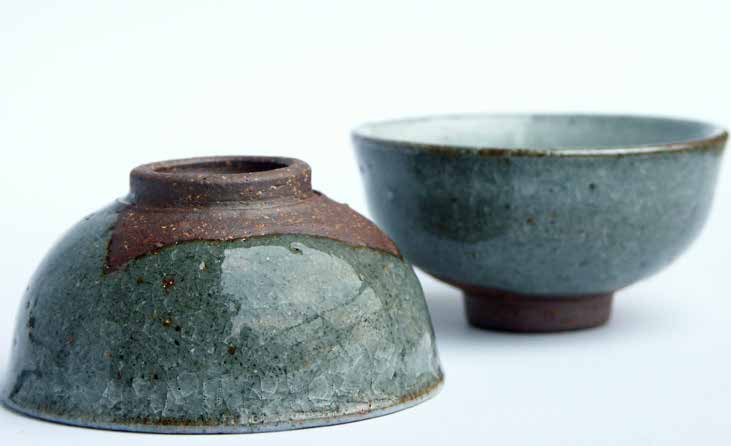
This iterative process has been reflected in Petr's overall body of work across the years. He said, "making teaware was a snowball effect" that began with a few pieces. Once they were incorporated into his portfolio, he started returning to teaware again and again. Initially, his teaware was suitable for Darjeeling, Japanese and Korean teas - what he was drinking at the time. But now, he focuses more on teaware for his current tea preferences - gong fu cha wares and charcoal stoves suitable for the Taiwanese and Chinese oolongs and the puerh he now drinks. He said, "There's always something new in my tea, and I try to create something for it."
But it's not just the forms that change - it's also the materials and techniques. From variations in clay (sometimes light, white porcelain stoneware, sometimes dark clay with a lot of iron, sometimes clay from a nearby forest or a friend's garden) to variations in glazes (shino glazing, celadon glazes, homemade glaze mixes, etc.) and firing techniques, Petr is continually shifting his approach to crafting teaware. He said, "I like to use different materials and glazes, not focus on one style. Mostly, I use different glazes after bisque firing. Very often it's a surprise that you're testing or experimenting with when you have some free bowls, but very often you base it on experience. It's an alchemy, but as everything, in ceramics, it's experience." He added, "Always, there can be accidents, good or bad. But that's one of the things I love about the process. The nature of man is that you want to control everything, but you know you cannot. So you have to let it go, focus on what you can do and learn from what happens."
When Petr began to mix his own glazes, he read a workbook on ash glazes by a famous English potter named Phil Rodgers. Petr said, "It's why I started learning English." But learning English and knowing how to make ash glazes aren't the only good things that arose from Petr's glaze mixing - he also ended up meeting Miroslava Randova ("Mirka"), who had studied ceramics in the US, and experimenting in glazing along with her. He said, "When I met Mirka, I started keeping meticulous notes. We put it in a book - more like a thick, wild worksheet of notes. She taught me different aspects of glazing. It was wonderful." And today, they mix the majority of the glazes they utilize, trying out different glaze mixes on "test tiles" (small ceramic tiles with test glaze samples) each time they fire. Still, he's not averse to using a simple glaze that he didn't make himself. He said, "I don't want to be too fancy, like, 'I only mix my own glazes.' I like simple white glaze for everyday bowls."
Petr explained that glazes are made from several chemical components: silica (which gives a glaze its glassiness), an oxide (which determines the color), a flux (which lowers the melting temperature of the glaze) and a stabilizer (which keeps the glaze from running too much). These usually come from a mix of natural sources, and are often obtained from plant ash. His preferred materials are locally abundant ones: hay ash and the ash from his wood fireplace. But he can't just pick any old plant ashes. The balance of each glaze's chemical components comes from the different natural materials used to make it. For example, rice husks are 90 percent silica, so firing with rice husks alone is impossible, but mixing them with other materials gives a good sheen to ceramics. On the other end of the spectrum, some pine wood has only about 10 percent silica, so it needs additional silica to work well. Petr said they have to find the right balance over time: "Sometimes, the glaze is running too much or there's some other problem, so you work with it over the years." However, once he has found the right mix, there's no promise he can keep it. "Some glazes are from natural materials, so when you start they are great, but when you run out it's different because the ash is different, even if it's from the same plant. It's not possible to recreate."
Additionally, different glazes work well for different kinds of teaware, and Petr has to be very careful about which glazes he uses for cups and tea bowls in particular. He said that certain glaze patinas can change the aroma of teas, so there are glazes he never uses for drinking vessels, and he's still sorting out which glazes are best for which types of teaware.
Although many potters will tell you that bisque firing is optional, Petr and his girlfriend and collaborator, Mirka, choose to bisque fire all their work. Bisque firing is a sort of preliminary firing that changes soft clay into (still soft, but far more rigid) ceramic material. It reduces the chances of breakage and cracking, and it allows for far greater flexibility in glazing and other decorative techniques.
They bisque fire their ceramics to about 1000 degrees Celsius in an electric kiln. Some pieces already have an underglaze (a base layer glaze that does not appear shiny or crystalline after firing), which allows for layered glazing techniques later.
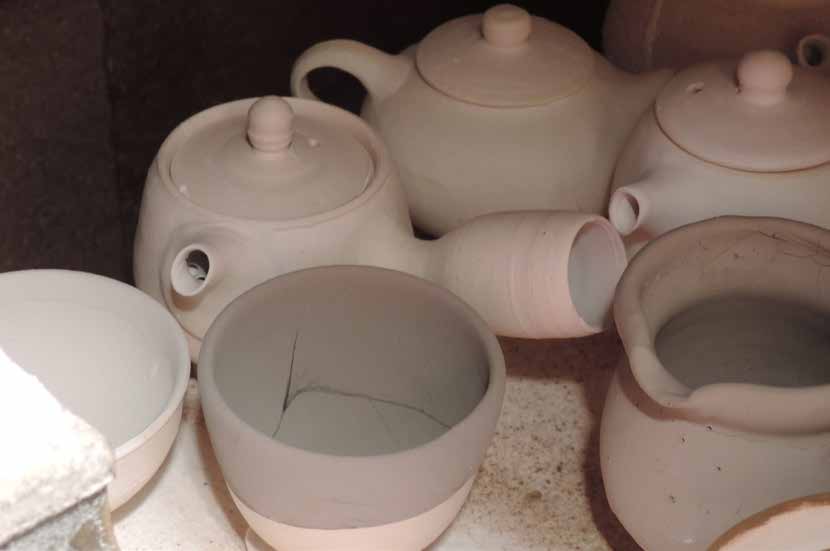
For some potters, firing is a wild and intense process. But not for Petr. He said, "Firing is not crazy. It's nice. But," he added, "the loading is one of the most important things you can do, because of the temperature variations." The front of the kiln is the hottest, while the back of the kiln and the levels closest to the ground are substantially cooler. This can create enormous variations in glaze coloration, effects of the flames and even breakage. Petr said, "When you close the kiln and start firing, you are focused and relaxed because everything you could do, you've done. It's in the hands of God. There's a release. You just focus and listen to the kiln."
After Petr has loaded the kiln and started firing, he uses tools called "cones" to control his firing process. Cones are small pieces of ceramic material in an elongated, triangular-pyramid shape. They are mixed to melt at certain temperatures (such as 960 decrees Celsius or 1250 degrees Celsius), and they are placed at an angle in various spots in the kiln before firing to indicate to the potter what the temperature is there during firing. When the tip of the cone starts to bend over, the potter knows that area of the kiln has reached the temperature that corresponds with that cone. And when the cone continues to melt downward, the potter knows that the temperature is being maintained in that part of the kiln.
Cones are especially useful for a technique Petr uses in every wood firing: reduction firing. The basic principle of reduction firing is that fire needs oxygen to burn, and that if you reduce the oxygen supply for a large fire, then it will seek out oxygen in chemical compounds, such as those in glazes and in clay. When Petr knows that the kiln has reached a certain temperature (usually 960 degrees), and then he will close off some of the air supply for the kiln, causing the fire to gets its oxygen from nonair sources. So, for example, a celadon glaze may start as FeO3, which is clear, then lose its oxygen to the fire, and become FeO, which is a jadeite color. And copper dioxide glaze will start out green, but can become copper oxide, which is a red color referred to as "ox blood" in the ceramics world. Similarly, red clay can lose oxygen molecules and become dark brown or black.
Petr and Mirka built their kiln themselves. It was adapted from the Phoenix Kiln style, and is the seventh kiln Petr has built. One of the perks of building your own kiln is that you can customize it, and that's something they did in order to create unglazed wares during wood firings.
As you know, heat rises. For Petr and Mirka, this means that the lower levels of the kiln are much cooler than the upper levels. If they wanted to fire glazed wares there, then they would have to create entirely different glaze formulas, which is difficult and minimally rewarding. So rather than do that, they decided to fire unglazed pieces on these lower shelves. And (here's the cool part) they decided to build in a little side door so they can use these shelves for a charcoal firing technique based on Bizen ware.
When the kiln reaches its peak temperature, and the coolest part is blazing at an infernal 1250 degrees and the clay is white-hot, they close the kiln slightly and open up a little side door by the lower shelves. They throw in charcoal, which creates several different, localized effects on the pieces there. One effect is a sort of local reduction firing, in which the oxygen gets used up by the charcoal and gets sucked out of compounds in portions of the clay on the lower shelves. Another is a sort of visible smoke or flame marks on the unglazed surfaces. And a third is the appearance of "shadows" of localized reduction or smoke marks, which occur when one piece is partially blocking another, allowing only part of it to be impacted by the charcoal, smoke and flame.
Once they've added in the charcoal, they seal the kiln and allow it to cool. When they open the kiln again, there's a thick layer of charcoal ash spread over the lower parts of the kiln, and they have to dig smaller pieces out of the ash. The results can be surprising and incredibly varied. Petr said, "We like to use reduction firing on big puerh jars because you cannot cover it all with ash, so you just cover the base. You can get rings of black, dark brown, rust, red, yellow and sandy clay. It can be distinct or a gradation. You cannot predict it so much."
During our talk, Petr also shared quite a few details about celadon and shino glazing techniques, both of which play major roles in teaware production. We'll expand upon what he shared by gathering additional information from other sources, and you can expect to see articles on these glazing techniques in the magazine later this year. Until then, we're wishing you peace and wisdom with every sip!

